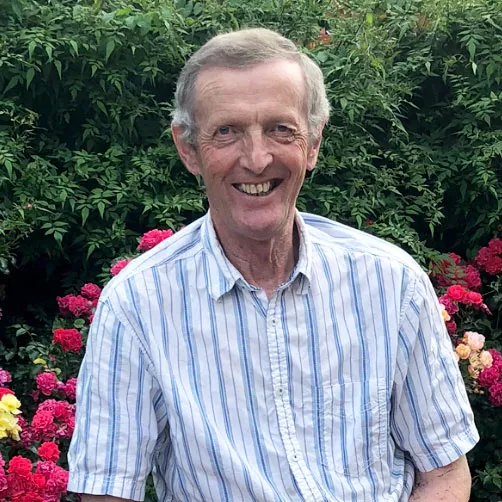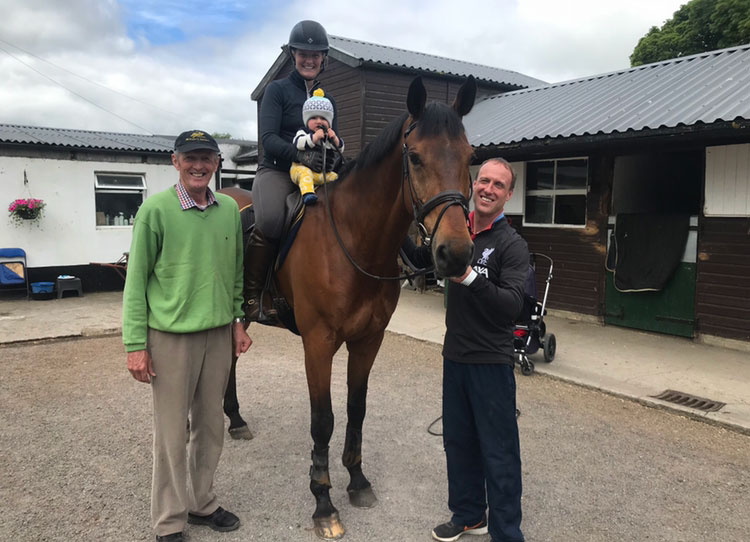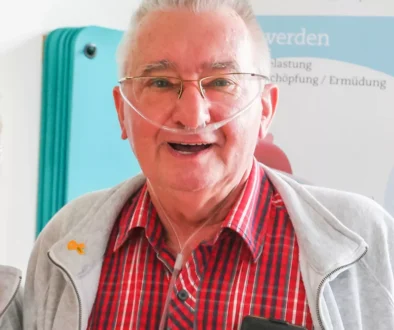Cornelius’ Story on Severe COPD/Emphysema

Procedure Details:
Age at Treatment: 67
Hospital: Mater Hospital, Dublin, Ireland
Date of Procedure: May, 2020
Life Before Zephyr® Valves:
I’d describe myself as outgoing and chatty, with a competitive streak. I’ve always loved horses — they’re my lifelong passion. When you have horses, they become a part of your family.
I used to ride for a living. I was a show jumper, and I absolutely loved competing. It gave me such a thrill! I competed professionally until 1998 when I sustained an injury.
Then, I became a farmer and started teaching others to horse ride, which brought me so much joy. That is, until I became too unwell with emphysema to teach.
I was diagnosed with COPD in around 1990, after struggling with shortness of breath. It wasn’t too bad at first, but my condition kept getting worse over time.
It got to the point where I was breathless every day. This had a huge impact on my life. The worst thing was the tiredness. Being breathless is exhausting.
My tiredness started to affect other things too, like my memory. I’d be going to the shop, and I’d have to stop so many times to catch my breath that, by the time I got to the shop, I couldn’t remember what I’d gone out to buy!
Not being able to breathe properly makes everything tough. Even really basic things that you used to take from granted, like bending over to do up your shoe. You feel like you’re choking for air, and you just can’t do it.
The medication just wasn’t doing the job, so my doctor referred me to see Professor Karen Redmond. She started doing tests and said I was eligible for Zephyr Valve treatment. I said let’s go for it! I trusted her advice completely and I was so fed up with my situation.

Life After Zephyr Valves:
Professor Karen Redmond carried out my Zephyr Valve procedure at Mater hospital in Dublin, in May 2020. I was 61. It all went smoothly. I was put to sleep, so I knew nothing about it.
When I woke up from the anesthetic in the recovery room, and felt absolutely great — I could breathe again! The results were so good. Honestly, it was such a relief. Not being able to breathe had been so frustrating.
I recovered really quickly. I think my rapid recovery was because — other than the emphysema — I’ve always been active and healthy. I’m outside all day every day as a farmer, and the exercise does me the world of good.
With my Zephyr Valves, I’m able to walk across the yard without getting breathless. Soon, I’ll be able to get out again and enjoy a day at the races. I feel like I’m now able to see and enjoy all the good things in life!
Now lockdown is starting to lift, I have everything to look forward to. The best part is that I’m well enough to teach horse riding again. This means I can finally help my daughter with her training. She’s a great rider and she’s training for three day events. I’m so proud I get to help.
What would I say to anyone with severe emphysema who is eligible for the Zephyr Valves?
If the doctor says you’re eligible, go for it — 100%.

The results of case studies do not necessarily allow conclusions to be drawn in other cases. Results in other cases can be different. Possible complications associated with the endobronchial valve treatment include: Pneumothorax, deterioration of the COPD symptoms, pneumonia, dyspnea and in rare cases death. The Zephyr® Endobronchial Valve is an implantable bronchial valve intended to control airflow in order to improve lung functions in patients with hyperinflation associated with severe emphysema and/or to reduce air leaks. The Zephyr Valve is contraindicated for: Patients for whom bronchoscopic procedures are contraindicated; Evidence of active pulmonary infection; Patients with known allergies to Nitinol (nickel-titanium) or its constituent metals (nickel or titanium); Patients with known allergies to silicone; Patients who have not quit smoking. Use is restricted to a trained physician. Prior to use, please reference the Zephyr Endobronchial System Instructions for more information on indications, contraindications, warnings, all precautions, and adverse events.
OTH-EN-1006-v1 Patient Story Cornelius Power



